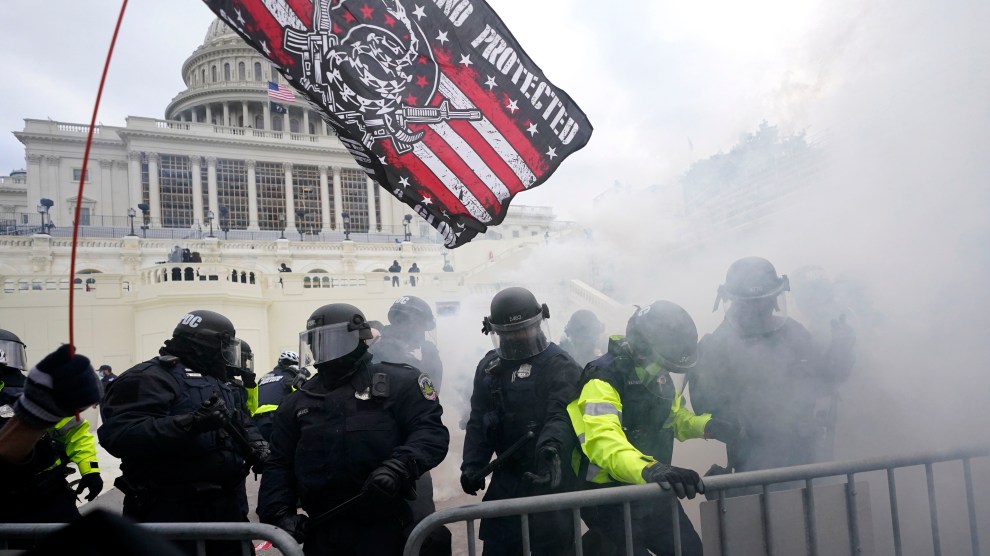
AP Photo/Julio Cortez
The United States Capitol Police misjudged the potential for violence at the Capitol on January 6, 2021, forecasting it as only a remote risk, according to intelligence reports obtained by the Associated Press.
The reports, in the words of the AP, “show how the police agency for days grievously underestimated the prospect of chaotic violence and disruptions,” even as journalists and activists at the time were cautioning about the potential for violence that they were seeing in online far-right and pro-Trump spaces.
The daily intelligence reports for January 4th, 5th, and 6th in 2021 had been discussed in congressional testimony and summarized in a Senate report on the failure to properly prepare for and respond to the chaos of January 6. In those full documents viewed by the AP, the publication found that Capitol Police had anticipated it to be “highly improbable” that people would conduct civil disobedience requiring arrests during the January 6 Stop the Steal protest. They rated other gatherings planned at the Capitol that day as “remote,” “highly improbable,” or “improbable” in their chances of causing major disruptions.
The reports for the 4th, 5th, and 6th contradict the findings and warnings of other Capitol Intelligence reports. A memo for January 3 found cautioned of a “significantly dangerous situation for law enforcement and the general public alike,” and a December 21st, 2020 report noted that people online were discussing and researching the tunnels underneath the Capitol, used by members of Congress, their staff, and journalists.
The Capitol Police’s response to the riots and storming of the Capitol were harshly condemned in the Senate’s report on the “security, planning, and response failures to Jan. 6 noting that there was “a lack of consensus about the gravity of the threat posed on January 6, 2021.”
















